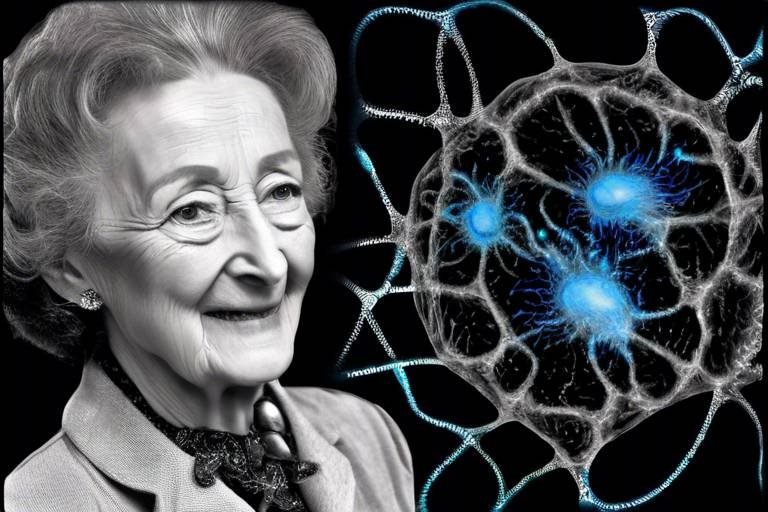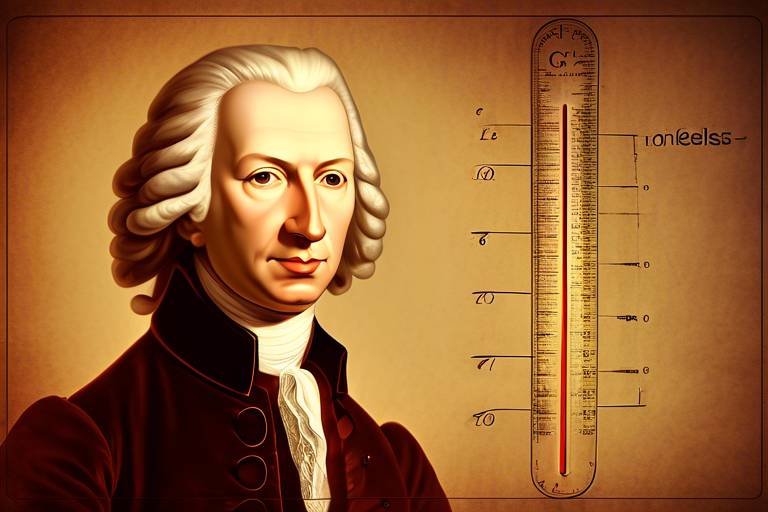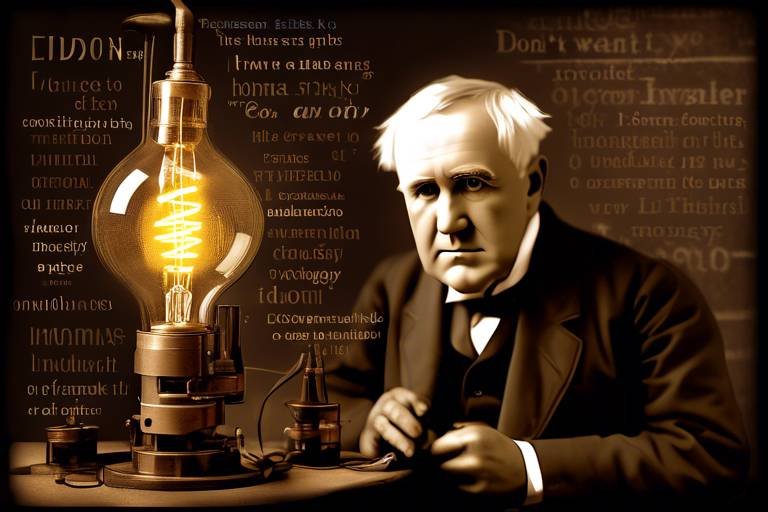The Life of Anton Chekhov and the Science of Medicine
Anton Chekhov, a name synonymous with literary brilliance, was not only a masterful writer but also a trained physician. This fascinating duality in his life is what makes his work so compelling. Imagine a world where the intricacies of human emotions are explored through the lens of a doctor who has witnessed the fragility of life firsthand. Chekhov’s experiences in medicine deeply influenced his storytelling, allowing him to create characters that resonate with authenticity and depth. In this article, we will embark on a journey through Chekhov’s life, examining how his medical background shaped his literary genius, and how he deftly navigated the realms of both medicine and literature.
Born on January 29, 1860, in Taganrog, Russia, Chekhov was the third of six children in a family that struggled financially. His father, a grocer, faced numerous hardships, which instilled in young Anton a keen sense of empathy and resilience. As a child, he was surrounded by stories, often captivated by the tales told by his mother and the vibrant life of the town. Education became a refuge for him, and he excelled in his studies, eventually moving to Moscow to pursue higher education. It was during these formative years that Chekhov's passion for writing began to flourish, as he penned short stories to support his medical studies. This blend of literature and medicine would become the hallmark of his career, shaping the way he viewed the world around him.
Chekhov enrolled in the Moscow State University to study medicine, a decision that would profoundly impact his life and work. Graduating in 1884, he began practicing medicine while simultaneously writing. This dual career was not merely a means of financial support but a profound exploration of human existence. Chekhov's medical training provided him with a unique perspective on life and death, suffering and healing. He often treated patients from various walks of life, which enriched his understanding of human nature. The countless hours spent with patients allowed him to observe their struggles, fears, and hopes, all of which would later permeate his literary works.
Chekhov's medical knowledge was not just a backdrop; it was a vital element that enriched his literary creations. His characters are often imbued with a sense of realism that stems from his firsthand experiences in the medical field. For instance, in stories like "The Lady with the Dog," we see characters grappling with emotional and physical turmoil, reflecting the complexities of human existence. Chekhov’s ability to intertwine the medical with the emotional allows readers to connect with his characters on a deeper level. The authenticity of their experiences, particularly concerning illness and mortality, is a testament to Chekhov's keen insight as both a writer and a physician.
One of the defining features of Chekhov's work is his commitment to realism. His exposure to the medical field gave him a profound understanding of the human condition, which he skillfully translated into his stories. Chekhov's narratives often depict the psychological and physical struggles of his characters, showcasing their vulnerabilities and strengths. This realism resonates with readers, as it mirrors the complexities of everyday life. Through his stories, Chekhov invites us to confront uncomfortable truths about existence, making us reflect on our own lives and relationships.
Delving into specific characters, we can see how Chekhov’s medical background informed their development. For example, in "The Cherry Orchard," the characters grapple with loss and change, reflecting the emotional turmoil that often accompanies illness and aging. Chekhov’s understanding of human emotions, shaped by his medical experiences, allows him to portray these complexities with sensitivity and depth. His characters are not mere figments of imagination; they are reflections of real-life struggles, making them relatable and profoundly human.
Beyond fiction, Chekhov also made significant contributions to medical literature. His essays and observations reveal a thoughtful physician who cared deeply about the well-being of his patients. In works such as "On the Harm of Tobacco," he not only critiques societal norms but also emphasizes the importance of health and wellness. Chekhov's writings on medicine reflect his dual identity, showcasing how his literary prowess and medical knowledge intersected to create a body of work that is both enlightening and engaging.
Chekhov's literature is rich with recurring themes that reflect his medical experiences. His exploration of existential questions and the human condition is a testament to his profound understanding of life’s fragility. Through his characters, Chekhov examines the intricacies of relationships, the weight of societal expectations, and the inevitability of death, all of which resonate deeply with readers.
Illness and suffering are central themes in Chekhov's work, providing a poignant reflection on the fragility of life. His firsthand experiences as a physician allowed him to portray these themes with authenticity. In stories like "The Seagull," characters confront their mortality and the emotional weight of their choices, inviting readers to empathize with their struggles. Chekhov's understanding of suffering goes beyond the physical; it taps into the emotional and psychological realms, creating a rich tapestry of human experience.
Chekhov's treatment of death in his works is marked by sensitivity and realism. His medical insights enabled him to approach this profound subject with a unique perspective. In "The Three Sisters," the characters grapple with unfulfilled dreams and the passage of time, reflecting the inevitability of death. Chekhov's exploration of mortality invites readers to confront their own fears and uncertainties, making his work not only relatable but also deeply impactful.
- What influenced Anton Chekhov's writing style?
Chekhov's medical background significantly influenced his writing style, providing him with a unique perspective on human emotions and experiences. - How did Chekhov's experiences as a physician shape his characters?
His experiences allowed him to create realistic characters that reflect the complexities of human emotions and relationships. - What themes are prevalent in Chekhov's works?
Common themes include illness, suffering, death, and the exploration of the human condition.

Chekhov's Early Life
Anton Chekhov was born on January 29, 1860, in Taganrog, a small port town in southern Russia. Growing up in a family of modest means, he was the third of six children. His father, Pavel, was a grocer who had a strict and often harsh demeanor, while his mother, Yevgeniya, was a loving and nurturing figure in his life. This dynamic created a backdrop of tension and affection that would later seep into Chekhov's writing. The contrasting influences of his parents played a significant role in shaping his character and outlook on life.
Chekhov's early education began at a church school, where he displayed a keen interest in literature and the arts. However, it wasn't until he attended the Taganrog Gymnasium that his passion for writing truly blossomed. The gymnasium introduced him to a world of classical literature, and he began to write short stories and plays. Despite the challenges of his family's financial situation, young Anton was determined to pursue his dreams. He often took on tutoring jobs to help support his family, showcasing his resilience and dedication.
In 1879, Chekhov moved to Moscow to study medicine at the Moscow State University. This transition marked a pivotal moment in his life, as he balanced his medical studies with his burgeoning writing career. It was during this time that he published his first short stories in various magazines, gaining recognition for his unique voice and perspective. Chekhov's experiences in the bustling city of Moscow exposed him to a diverse array of characters and social dynamics, enriching his understanding of human nature.
Chekhov's upbringing and education were characterized by a blend of hardship and determination. The early experiences he faced—such as financial struggles, family tensions, and the pursuit of knowledge—shaped his worldview and laid the groundwork for his future as both a writer and a physician. The intersection of these two paths would later become a hallmark of his literary genius, allowing him to explore the depths of human emotion with authenticity and insight.
As he navigated his medical training, Chekhov developed a profound empathy for his patients, which would later inform his writing. His early life experiences fostered a deep understanding of the complexities of human existence, a theme that would resonate throughout his literary works. This duality of being both a physician and a writer allowed Chekhov to examine life's fragility and the human condition with unparalleled depth.
In summary, Chekhov's early life was a tapestry woven from the threads of family, education, and personal struggle. Each element contributed to the rich narrative that would unfold in his later works, making him one of the most celebrated writers in history. His journey from a small town in Russia to the heights of literary acclaim is a testament to his resilience and passion for understanding the human experience.

Medical Education and Career
Anton Chekhov's journey into the world of medicine began in a modest setting, shaped by his family's financial struggles and his own relentless pursuit of knowledge. Born in 1860 in Taganrog, Russia, Chekhov was not just a budding writer; he was also a young man with a dream of becoming a physician. His early education was a blend of rigorous study and the harsh realities of life, which would later influence his literary voice. Chekhov enrolled at the Medical Faculty of Moscow University in 1879, where he balanced his studies with the demands of supporting his family. This duality of life—navigating the world of academia while bearing the weight of familial responsibilities—would become a recurring theme in his writing.
During his time at university, Chekhov's medical education was comprehensive, covering various aspects of human anatomy, pathology, and the principles of treatment. He graduated in 1884, earning his medical degree, but his career as a physician was as unconventional as his literary path. Instead of establishing a traditional medical practice, Chekhov chose to work in various locations, often in rural areas where medical care was scarce. This decision allowed him to witness firsthand the struggles of the common people, providing him with invaluable insights into their lives, ailments, and the socio-economic barriers they faced.
Chekhov's experiences as a practicing physician were profound. He often treated patients with a range of illnesses, from minor ailments to serious conditions, and he developed a keen understanding of human suffering. His interactions with patients were not just clinical; they were deeply personal. He approached his medical practice with empathy and compassion, qualities that would later permeate his literary works. In fact, it is said that Chekhov's ability to observe and understand the emotional and psychological dimensions of his patients enriched his storytelling, allowing him to create characters that resonated with authenticity and depth.
To illustrate the impact of his medical career on his writing, consider the following table that outlines key aspects of Chekhov's medical education and career:
| Aspect | Details |
|---|---|
| Medical Degree | Graduated from Moscow University in 1884 |
| Medical Practice | Worked in rural areas, treating various ailments |
| Influence on Writing | Developed empathy and understanding of human suffering |
| Notable Works | Short stories and plays reflecting medical themes |
Chekhov's medical career also allowed him to explore the intricacies of human relationships. He often found that the act of healing went beyond physical treatment; it involved understanding the emotional and social contexts of his patients' lives. This holistic approach to medicine provided a rich tapestry of experiences that he would weave into his narratives. For instance, the emotional weight of illness and the fragility of life became recurring motifs in his stories, echoing the realities he faced in his medical practice.
In conclusion, Anton Chekhov's medical education and career were not mere footnotes in his life; they were foundational elements that shaped his literary genius. His ability to intertwine medical knowledge with storytelling allowed him to create characters that were not only believable but also deeply relatable. Through his unique lens as a physician, Chekhov brought a level of realism and emotional depth to his works that continues to resonate with readers today.
- What inspired Chekhov to pursue a career in medicine?
Chekhov was motivated by a desire to help others and the necessity of supporting his family financially. - How did Chekhov's medical experiences influence his writing?
His firsthand experiences with patients allowed him to portray human suffering and emotional complexity with authenticity. - What are some of Chekhov's notable works that reflect his medical background?
Stories like "The Lady with the Dog" and plays such as "The Cherry Orchard" incorporate themes of illness and human emotion.

Influence of Medicine on Writing
When we think about Anton Chekhov, the first thing that often comes to mind is his incredible talent as a playwright and short story writer. However, what many people might overlook is the profound impact that his medical background had on his literary creations. Chekhov was not just a writer; he was also a practicing physician, and this dual identity enriched his narratives in ways that are both subtle and striking. Imagine a doctor who not only treats ailments but also understands the emotional and psychological turmoil that accompanies illness. This unique perspective allowed Chekhov to breathe life into his characters, making their struggles feel authentic and relatable.
Chekhov's experiences in the medical field provided him with a front-row seat to the complexities of human existence. He witnessed the vulnerabilities of his patients, the nuances of their emotional states, and the reality of suffering. This exposure translated into his writing, where he often delves into themes of illness, despair, and the fragility of life. For instance, in stories like "The Lady with the Dog," we see characters grappling not just with romantic entanglements but also with deeper existential questions that echo the uncertainties Chekhov observed in his medical practice.
Moreover, Chekhov's medical training equipped him with a rich vocabulary related to health and disease, which he employed to create vivid imagery in his stories. His ability to describe ailments and their effects on the human psyche is unparalleled. He didn’t just write about physical suffering; he captured the emotional landscape that accompanies such experiences. Through his narratives, readers can almost feel the weight of illness pressing down on his characters, making their journeys all the more poignant.
In many of his works, Chekhov employs a technique known as realism, which draws heavily from his understanding of medicine. By portraying characters who are not merely defined by their illnesses but are instead complex individuals facing various life challenges, he invites readers to engage with the human condition on a deeper level. For example, in "Ward No. 6," Chekhov explores the thin line between sanity and insanity, reflecting his insights gained from observing patients in a mental institution. This story serves as a powerful commentary on societal perceptions of mental health, showcasing how Chekhov's medical knowledge informed his explorations of human psychology.
Additionally, Chekhov's writing often reflects a sense of empathy and compassion that is rooted in his medical practice. He understood that behind every diagnosis lies a story—a narrative filled with hopes, fears, and dreams. This understanding is what allowed him to create characters that resonate with readers long after the final page is turned. His ability to portray the intricacies of human relationships in the face of suffering is a testament to his dual expertise as a physician and a writer.
In conclusion, the influence of medicine on Chekhov's writing is profound and multifaceted. His experiences as a doctor provided him with a unique lens through which he viewed the world, allowing him to create rich, layered characters that grapple with the complexities of life and death. Through his literary works, Chekhov invites us to reflect on our own experiences with illness, suffering, and the inevitable mortality that binds us all, making his stories timeless and universally relevant.
- How did Chekhov's medical background influence his writing?
Chekhov's experiences as a physician allowed him to explore themes of illness, suffering, and the human condition with authenticity and depth. - What themes are prevalent in Chekhov's works?
Recurring themes include illness, suffering, death, and the complexities of human relationships. - Can you give an example of a story where Chekhov's medical knowledge is evident?
In "Ward No. 6," Chekhov explores mental health, showcasing his insights into the human psyche.

Realism in Chekhov's Stories
Anton Chekhov is often hailed as a master of realism, a literary style that seeks to depict life as it is, without embellishment or romanticism. His background in medicine provided him with a unique lens through which he viewed the world, allowing him to capture the nuances of human experience with profound accuracy. Chekhov’s stories are not just narratives; they are deep explorations of the human psyche, revealing the intricate tapestry of emotions that define our existence.
One of the most striking aspects of Chekhov's realism is his ability to portray the mundane aspects of life with a sense of significance. He had an uncanny knack for finding the extraordinary within the ordinary. For instance, in his short story "The Complaints Book," Chekhov illustrates how a simple encounter in a doctor's office can unfold into a rich commentary on human behavior and societal norms. This approach reflects his belief that every moment holds the potential for deeper meaning, a theme that resonates throughout his body of work.
Moreover, Chekhov's experiences as a physician offered him insights into the human condition that few writers could claim. He frequently drew upon his medical knowledge to depict illness and suffering with a level of authenticity that resonates with readers. His characters often grapple with physical ailments, but it is their emotional and psychological struggles that truly come to the forefront. For instance, in "The Lady with the Dog," the protagonist's internal conflict is mirrored by the external challenges he faces, creating a rich tapestry of realism that captures the essence of human struggle.
Chekhov's use of dialogue is another hallmark of his realistic style. He masterfully crafts conversations that feel genuine and relatable, allowing readers to immerse themselves in the characters' lives. His dialogues are often filled with pauses, interruptions, and unfinished thoughts—elements that reflect real-life communication. This technique not only enhances the authenticity of his characters but also invites readers to engage with the story on a more personal level.
Additionally, Chekhov's realism often incorporates elements of nature and the environment, serving as a backdrop that mirrors the emotional states of his characters. The changing seasons, the weather, and the landscapes he describes are not mere settings; they are integral to the narrative, reflecting the internal struggles and transformations of the characters. For example, in "The Cherry Orchard," the estate itself becomes a symbol of loss and nostalgia, embodying the characters' emotional turmoil while also grounding the story in a tangible reality.
In summary, the realism in Chekhov's stories is a testament to his keen observation of life and human nature. His medical background enriched his writing, allowing him to delve into the complexities of existence with both sensitivity and precision. Through his vivid portrayals of everyday life, Chekhov invites readers to reflect on their own experiences, reminding us that the beauty of life often lies in its simplest moments. His work continues to resonate today, proving that the essence of realism is timeless.
- What makes Chekhov's writing style unique? Chekhov's writing is characterized by its realism, deep character development, and authentic dialogue, all influenced by his medical background.
- How did Chekhov's medical career influence his literature? His experiences as a physician provided him with insights into human suffering and emotions, allowing him to portray characters and situations with remarkable authenticity.
- What themes are prevalent in Chekhov's works? Common themes in Chekhov's stories include illness, suffering, death, and the complexities of human relationships.
- Why is realism important in literature? Realism allows writers to depict life in a truthful manner, helping readers connect with the characters and their experiences on a deeper level.

Character Development through Medical Insight
Anton Chekhov's unique position as both a physician and a writer allowed him to delve deeply into the complexities of human nature. His medical background enriched his understanding of the human psyche, which in turn informed the development of his characters. Chekhov didn’t just write about people; he portrayed them with a level of detail that made them feel real, almost as if they were standing right in front of us. His characters often grapple with their vulnerabilities, fears, and desires, echoing the struggles that Chekhov himself witnessed in his patients.
Take, for instance, the character of Ivanov from Chekhov's play of the same name. Ivanov is a man in deep existential crisis, burdened by the weight of his unfulfilled life and the illness of his wife. Chekhov draws on his medical insights to craft Ivanov's character with a profound sense of realism. The way Ivanov reacts to his wife's suffering reflects not only his personal despair but also the universal struggle against the inevitability of death. Chekhov’s understanding of illness enables him to portray Ivanov's emotional turmoil with authenticity, making his plight resonate with readers and audiences alike.
Similarly, in stories like "The Lady with the Dog," the character of Dmitri Gurov undergoes a transformation that is intricately tied to his experiences and observations of life, love, and mortality. Chekhov's medical insights allow him to explore Gurov's emotional conflicts in a nuanced manner. The character's infidelities and eventual awakening to genuine love are not just plot points; they are reflections of the deeper human condition that Chekhov so keenly understood as a physician. Through Gurov, Chekhov illustrates how personal experiences, coupled with a keen awareness of human suffering, can lead to profound emotional growth.
Chekhov’s characters often embody the struggles of their time, and his medical insight serves as a lens through which we can examine their lives. For example, in "The Cherry Orchard," the character of Lyuba Ranevskaya faces the impending loss of her family estate, which serves as a metaphor for the decay of the aristocracy in Russia. Chekhov’s familiarity with human suffering and emotional distress allows him to portray her character with a depth that evokes empathy. Readers can feel her despair and nostalgia, making her journey all the more poignant.
Moreover, Chekhov's ability to create characters that are deeply flawed yet relatable is a testament to his medical training. He understood that just as patients are not defined solely by their illnesses, people are not defined solely by their shortcomings. This insight helps to create characters that are multi-dimensional. They are not just victims of their circumstances; they are individuals with hopes, dreams, and fears, navigating the complexities of life. This is particularly evident in his short stories, where minor characters often leave a lasting impact through their brief yet powerful interactions.
In essence, Chekhov's characters serve as a mirror reflecting the human condition, enriched by his medical insights. They remind us that behind every illness, every emotional struggle, lies a story waiting to be told. It is this intricate interplay between medicine and literature that allows Chekhov to craft characters that continue to resonate with readers today, drawing us into their worlds and compelling us to confront our own humanity.
- How did Chekhov's medical background influence his writing?
Chekhov's training as a physician gave him a unique perspective on human suffering, allowing him to create deeply nuanced characters that reflect real-life struggles. - What are some notable characters created by Chekhov?
Characters such as Ivanov, Dmitri Gurov, and Lyuba Ranevskaya are examples of how Chekhov infused his understanding of medicine into character development. - Why is realism important in Chekhov's works?
Realism allows Chekhov to depict the complexities of human emotions and relationships, making his characters relatable and their experiences poignant.

Chekhov's Contribution to Medical Literature
Anton Chekhov, often celebrated for his literary prowess, also made significant contributions to the field of medical literature. His unique position as both a physician and a writer allowed him to blend scientific insight with artistic expression, creating a rich tapestry of narratives that reflect the complexities of human health and illness. Chekhov understood that medicine was not just about treating ailments; it was about understanding the human condition, the emotional turmoil that accompanies suffering, and the fragility of life.
Throughout his career, Chekhov penned numerous essays and articles that showcased his medical observations. These writings were not merely clinical accounts; they were imbued with empathy and a deep understanding of the patients he encountered. For instance, in his essay "The Doctor's Visit," Chekhov reflects on the intimate relationship between a physician and their patient, emphasizing the importance of compassion in medical practice. This perspective is crucial, as it highlights the emotional labor that healthcare providers often undertake, which is a theme that resonates throughout his fiction as well.
Chekhov's medical writings often addressed the societal issues of his time, such as the inadequacies of the healthcare system and the struggles faced by the impoverished. His observations were sharp and insightful, revealing the stark realities of illness in a society that often turned a blind eye to suffering. For example, in his short story "The Complaints Book," he critiques the bureaucratic systems that hinder effective medical care, showcasing his belief that a physician’s role extends beyond the clinic and into the realm of social justice.
Moreover, Chekhov's medical background informed many of his fictional characters, who often grapple with illness and existential questions. His ability to portray the psychological and physical aspects of suffering with such authenticity is a testament to his dual identity as a doctor and a writer. In stories like "The Lady with the Dog," we see characters whose lives are intertwined with themes of illness, love, and mortality, illustrating how Chekhov’s medical insights enriched his storytelling.
In addition to his essays, Chekhov also contributed to medical journals, where he shared his thoughts on various health-related topics. His articles often contained practical advice for doctors, as well as reflections on the ethical dilemmas faced in medical practice. This dual focus on practical medicine and philosophical musings set him apart from many of his contemporaries, making his contributions to medical literature both profound and enduring.
Overall, Anton Chekhov's contributions to medical literature are a fascinating blend of clinical knowledge and literary artistry. His works serve as a bridge between the worlds of medicine and literature, offering insights that are as relevant today as they were in his time. By intertwining his experiences as a physician with his literary creations, Chekhov not only enriched the field of literature but also provided valuable commentary on the human experience, making him a pivotal figure in both realms.
- What inspired Chekhov to write about medicine? Chekhov’s experiences as a physician deeply influenced his writing, allowing him to portray illness and human suffering with authenticity.
- Did Chekhov write any specific medical texts? Yes, Chekhov wrote numerous essays and articles for medical journals, addressing various health-related topics and ethical dilemmas in medicine.
- How did Chekhov's medical background influence his characters? His understanding of human emotions and suffering allowed him to create complex characters who grapple with illness and existential questions.

Thematic Exploration in Chekhov's Works
Anton Chekhov’s literary oeuvre is a profound reflection of the complexities of human existence, intricately woven with themes that resonate deeply with readers. His experiences as a physician provided him with a unique lens through which he viewed the world, allowing him to delve into the intricacies of the human condition. One of the most prominent themes in Chekhov's works is the exploration of existential questions that confront us all. Through his characters, he examines what it means to live, suffer, and ultimately confront our mortality.
Chekhov’s narratives are often steeped in the realities of illness and suffering, which he understood intimately from his medical practice. His characters frequently grapple with physical ailments and emotional turmoil, reflecting the fragility of life. This theme is not merely a backdrop; it serves as a catalyst for character development and plot progression. For instance, in stories like “The Lady with the Dog,” the protagonist's emotional struggles are mirrored by the societal expectations and personal afflictions that plague him. Chekhov masterfully illustrates how illness can serve as a metaphor for deeper existential crises, prompting readers to reflect on their own lives.
Moreover, the theme of death and mortality is intricately woven into Chekhov's storytelling. Unlike many writers who approach death with a sense of drama or tragedy, Chekhov treats it with a remarkable blend of sensitivity and realism. His characters often face death not as a climactic event, but as an inevitable part of life. This perspective can be seen in works such as “The Cherry Orchard,” where the impending loss of the family estate symbolizes the transient nature of life itself. Chekhov’s portrayal of death invites readers to confront their fears and uncertainties, allowing for a more profound understanding of what it means to be human.
In addition to these central themes, Chekhov’s works often explore the nuances of human relationships. His keen observations of interpersonal dynamics reveal the complexities of love, friendship, and familial ties. Characters are frequently caught in the web of their emotions, struggling to connect with one another amidst their personal dilemmas. This exploration of relationships is not just about the bonds that unite individuals but also the misunderstandings and conflicts that arise, highlighting the paradox of human intimacy.
To further illustrate Chekhov's thematic exploration, the following table summarizes key themes and their manifestations in his works:
| Theme | Examples in Works | Significance |
|---|---|---|
| Illness and Suffering | "The Lady with the Dog" | Reflects on emotional turmoil and societal pressures. |
| Death and Mortality | "The Cherry Orchard" | Explores the transient nature of life. |
| Human Relationships | "Three Sisters" | Highlights conflicts and connections within families. |
In conclusion, Chekhov's thematic exploration offers a rich tapestry of insights into the human experience. His ability to intertwine his medical knowledge with his literary craft results in stories that are not only engaging but also deeply reflective. By understanding illness, death, and the intricacies of human relationships, Chekhov invites readers to embark on a journey of self-discovery and contemplation, making his works timeless and universally relevant.
- What influenced Chekhov's writing style?
Chekhov's background in medicine greatly influenced his writing style, allowing him to portray characters and their struggles with authenticity. - How does Chekhov address the theme of mortality?
Chekhov approaches mortality with sensitivity, often depicting it as a natural part of life rather than a dramatic event. - What are some common themes in Chekhov's works?
Common themes include illness, suffering, human relationships, and existential questions.

Illness and Suffering
When we think about the literary works of Anton Chekhov, it’s impossible to overlook the profound impact that illness and suffering have on his narratives. Chekhov's dual identity as a physician and a writer allowed him to explore these themes with an authenticity that resonates deeply with readers. He didn’t just write about illness; he lived it, witnessed it, and understood the intricate dance between the body and the spirit. This unique perspective is what makes his stories feel so real and relatable.
In Chekhov's stories, illness often serves as a backdrop that reveals the true nature of his characters. It’s like a spotlight shining on their vulnerabilities, exposing their fears, regrets, and desires. For instance, in stories like "The Lady with the Dog," we see how the characters navigate their personal struggles while grappling with the weight of their own existence. Illness is not merely a physical ailment; it becomes a metaphor for the emotional and psychological turmoil that defines the human experience.
Chekhov’s characters often face the harsh realities of life, and their encounters with suffering compel them to confront their own mortality. This theme is prevalent in many of his works, where the fragility of life is ever-present. The way he portrays suffering can be likened to a painter using dark strokes to highlight the brilliance of a bright canvas. In doing so, he forces readers to reflect on their own lives, making them question what it means to truly live and feel.
Moreover, Chekhov's medical background allowed him to depict the physicality of suffering with remarkable detail. He understood the symptoms, the pain, and the emotional toll that illness exacts on individuals and their families. This understanding is evident in his writing, where he often describes the minutiae of physical ailments with a surgeon's precision. For example, in "The Complaints Book," Chekhov dives into the mundane yet profound aspects of illness, illustrating how it permeates everyday life and alters relationships.
To further illustrate the depth of Chekhov's exploration of illness and suffering, let’s consider a few key themes:
- Empathy and Compassion: Chekhov’s characters often exhibit a deep sense of empathy towards those who are suffering, reflecting his belief in the importance of human connection during times of hardship.
- Existential Reflection: Illness prompts characters to reflect on their lives, leading to moments of clarity and self-realization that are both poignant and profound.
- Isolation: Suffering often leads to feelings of isolation, as characters grapple with their pain in solitude, highlighting the loneliness that can accompany physical and emotional struggles.
Ultimately, Chekhov’s treatment of illness and suffering transcends the mere act of storytelling. It invites readers to engage in a dialogue about the human condition, prompting them to consider how they relate to their own suffering and that of others. His works serve as a reminder that while suffering is an inevitable part of life, it can also lead to profound insights and connections. In a world often filled with superficial distractions, Chekhov's exploration of illness offers a much-needed pause, encouraging us to reflect on what truly matters.
- What themes are prevalent in Chekhov's works?
Chekhov often explores themes of illness, suffering, death, and the complexities of human relationships. His medical background influences these themes, providing a unique perspective on the human experience.
- How did Chekhov's medical career influence his writing?
Chekhov’s experiences as a physician allowed him to portray illness and suffering with authenticity. His understanding of human anatomy and psychology enriched his character development and narrative depth.
- What is the significance of illness in Chekhov's stories?
Illness serves as a catalyst for character development, revealing vulnerabilities and prompting existential reflections that resonate with readers on a personal level.

Death and Mortality
Anton Chekhov had an extraordinary ability to weave the theme of death throughout his literary works, reflecting his profound understanding of mortality shaped by his medical background. For Chekhov, death was not merely an end; it was a multifaceted experience that resonated deeply within the human condition. His characters often confront mortality in ways that reveal their innermost fears, desires, and regrets, making the theme both universal and deeply personal.
Chekhov’s medical training provided him with a unique lens through which to view death. He understood the physiological processes of dying, but more importantly, he grasped the emotional turmoil that surrounds it. In stories like “The Lady with the Dog” and “The Cherry Orchard,” the specter of death looms large, influencing character motivations and relationships. For instance, in “The Cherry Orchard,” the inevitable loss of the family estate symbolizes not just the end of an era but also the fragility of life itself. Chekhov’s characters often grapple with their mortality, leading to moments of self-reflection and existential questioning.
Moreover, Chekhov’s portrayal of death is marked by a sense of realism that sets his work apart from that of his contemporaries. He eschews grandiose depictions of death, opting instead for subtlety and nuance. This realistic approach allows readers to engage with the characters’ experiences authentically. Chekhov writes about the mundane aspects of life and death, emphasizing that the process of dying is often unceremonious and intertwined with the everyday lives of those left behind. This perspective fosters a deeper connection between the reader and the characters, inviting us to contemplate our mortality alongside them.
In many of his stories, Chekhov also explores the impact of death on the living. Characters often face the aftermath of loss, grappling with grief and the void left by those who have passed. Chekhov’s keen observations of human behavior shine through in these moments, as he captures the intricate dance of emotions that accompany death. The way characters respond to loss—whether through denial, anger, or acceptance—mirrors the complexities of real-life mourning processes.
To further illustrate Chekhov’s nuanced exploration of death and mortality, consider the following table that highlights key themes and examples from his works:
| Story | Theme of Death | Character Response |
|---|---|---|
| The Lady with the Dog | Loss of innocence and the inevitability of change | Acceptance and a newfound appreciation for life |
| The Cherry Orchard | End of an era and the impact of change | Resignation and nostalgia |
| The Seagull | Unfulfilled aspirations and the weight of existence | Despair and reflection |
Ultimately, Chekhov’s treatment of death is a poignant reminder of life’s transience. His ability to evoke empathy and introspection through his characters’ encounters with mortality invites readers to reflect on their own lives and the inevitability of death. In a world that often shies away from discussing such a heavy topic, Chekhov’s works serve as a comforting embrace, reminding us that while death is a part of life, it is also a catalyst for deeper connections and understanding among the living.
- How did Chekhov's medical background influence his writing?
Chekhov's medical training provided him with insights into human suffering and the complexities of life and death, which enriched the depth of his characters and narratives.
- What themes related to death are prevalent in Chekhov's works?
Common themes include the inevitability of death, the emotional responses to loss, and the exploration of mortality as a part of the human experience.
- How does Chekhov portray the process of dying?
Chekhov's portrayal of dying is realistic and often understated, focusing on the mundane aspects and emotional turmoil surrounding death rather than dramatizing it.
Frequently Asked Questions
- What influenced Anton Chekhov's writing style?
Anton Chekhov's writing style was profoundly influenced by his background in medicine. His experiences as a physician allowed him to observe human behavior and emotions closely, which he skillfully translated into his literary works. The depth and authenticity of his characters often reflect the complexities of human suffering and the realities of life, making his stories relatable and impactful.
- How did Chekhov's medical training affect his character development?
Chekhov's medical training provided him with a unique perspective on human nature. His understanding of illness and suffering enabled him to create characters that embody psychological and emotional depth. By drawing on his medical insights, he was able to portray the struggles of his characters with a level of realism that resonates with readers, revealing the intricacies of their relationships and the human condition.
- What themes are prevalent in Chekhov's works?
Chekhov's works frequently explore themes of illness, suffering, death, and mortality. His medical background allowed him to approach these subjects with sensitivity and realism. Through his narratives, he invites readers to reflect on the fragility of life and the inevitability of death, often portraying these themes with a blend of poignancy and humor.
- Did Chekhov write any medical literature?
Yes, Chekhov wrote several essays and observations on medical topics. His writings often reflect his dual identity as both a writer and a physician, offering insights into medical practices and the experiences of patients. These works contribute to our understanding of his thoughts on medicine and its intersection with literature.
- How does Chekhov's realism differ from other literary styles?
Chekhov's realism is characterized by its focus on the everyday lives of ordinary people, emphasizing psychological depth and emotional truth. Unlike romanticized or idealized portrayals, Chekhov's stories often reveal the mundane struggles and complexities of life, making his characters and their experiences feel authentic and relatable. This approach sets him apart from other literary styles that may prioritize dramatic plots over realistic character development.



















